Rare WW2 Tiger I Ausf.E. early footage.
0:24 Ausf.H prototype test vehicle.
0:48 Propaganda reel for the Tiger I showing it's performance.
1:12 Tiger tanks shooting at Churchil targets that were captured at Antwerp.
3:06 completely destroyed Tiger tank in Africa, this tank was probably blown up by it's crew.
4:06 A Tiger tank after a failed assault in Tunisia, this tank was said to be blown up by it's own crew after it came under by 25pdr artillery and was immobilized.
4:17 Several Tiger tanks found by the Americans that were abandoned and blown up by there crews.
4:29 Churchill being shown a knocked out Tiger tank in Tunisia.
4:48 George VI being shown the Tiger I captured by the British 48th Royal Tank Regiment in Tunisia, this tank is still in the Bovington Tank museum.
5:01 The same vehicle being used in a training video.
7:53 A Tiger that was abandoned and destroyed by it's crew in Sicily.
8:10 A German training film, filmed with the Tiger 212.
8:40 A long newsreel filmed in Kurks, showing several Tigers and news crew filming the vehicles, the Tiger would see preference by film crews for their propaganda value.
The Tiger I was a German heavy tank developed in 1937 by Henschel & Sohn when the Waffenamt requested Henschel to develop a Durchbruchwagen, this would result into the Durchbruchwagen I
which would never be fitted with a turret and was replaced by the Durchbruchwagen II after the request for a heavier 30-tonne class vehicle with thicker armour.
The project was dropped in 1938 in favor of the larger and better-armoured VK 30.01 (H) and VK 36.01 (H), these vehicles would use the complex over-engineered Schachtellaufwerk track suspension system of torsion bar-sprung, overlapped and interleaved main road wheels, which would later become problematic when jamming solid in the winter.
Four prototype hulls were completed for testing. Two of these were later modified to build the "Sturer Emil" self-propelled anti-tank guns.
In 1941 with the experience of the Battle of France, Henschel and Ferdinand Porsche were asked to submit designs for a 45-tonne heavy tank, to be ready by June 1942. Porsche worked on an updated version of their VK 30.01 (P) Leopard tank prototype while Henschel worked on an improved VK 36.01 (H) tank. Henschel built two prototypes: a VK 45.01 (H) H1 with an 8.8 cm L/56 cannon, and a VK 45.01 (H) H2 with a 7.5 cm L/70 cannon.
Porsche and Henschel submitted prototype designs, each making use of the Krupp-designed turret. The Henschel design was accepted, mainly because the Porsche VK 4501 (P) prototype design used a troubled petrol-electric transmission system.
Production of the Panzerkampfwagen VI Ausf. H began in August 1942.
The tank was given its nickname "Tiger" by Ferdinand Porsche, and the Roman numeral was added after the Tiger II entered production.
The initial designation was Panzerkampfwagen VI Ausführung H was re-designated as PzKpfw VI Ausf. E in March 1943.
The Tiger was still at the prototype stage when it was first hurried into service, and therefore changes both large and small were made throughout the production run. A redesigned turret with a lower cupola was the most significant change. To cut costs, the river-fording submersion capability and an external air-filtration system were dropped.
It would first see action near Leningrad on 23 Sep. 1942 months earlier than had been planned. A platoon of 4 Tigers went into action, they could not operate in swampy, forested terrain, their movement was largely confined to roads and tracks, also many of these early models were plagued by problems with the transmission and many broke down, the Soviets also captured one Tiger largely intact, it enabled the Soviets to study the design and prepare countermeasures.
In the North African Campaign, the Tiger I first saw action during the Tunisian Campaign on 1 December 1942 east of Tebourba. The tanks proved that they had excellent protection from enemy fire, this greatly increased the crews trust in the quality of the armour, the crews also found the tank to be spacious and comfortable.
The Tiger proved to have great armament and was a outstanding design for its time, its armour which was resistant to tank and anti-tank guns of the time. and the 88 could knock out enemy Sherman tanks at 2,100 m and the T-34 at 1500 m, but with Allied tanks becoming more up-armored and upgraded and having better guns like the M3 90 mm cannon used on the M36 tank destroyer, made the Tiger vastly obsolete in the end.
The Tiger was also over-engineered using expensive materials and labor-intensive production methods, it was prone to track failures and breakdowns and was limited in range by its high fuel consumption. It was also hard to transport and was often too heavy for small bridges which had 35 ton weight limits.
-
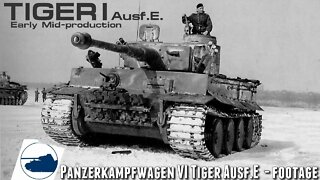 13:18
13:18
PANZER Insight
1 year agoWW2 Tiger I Ausf.E. early/mid-production - footage.
27 -
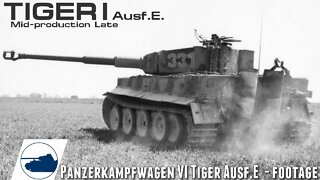 13:53
13:53
PANZER Insight
1 year agoWW2 Tiger I Ausf.E. mid-production/late - footage.
131 -
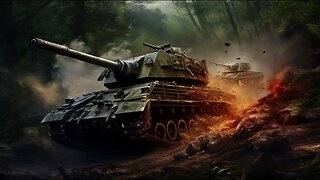 5:21
5:21
World War Stories
9 months ago $0.01 earnedTiger Tank: The Iron Beast that Roared through World War II
103 -
 2:09
2:09
CCxRC
7 years agoWLTOYS 12404 1/12th Truggy First Run Footage
5 -
 4:16
4:16
GBLynden's RC
8 years agoFreewing F-14 Tomcat Twin 80mm EDF Jet Flight Demo & Bonus Footage
127 -
 3:32
3:32
GBLynden's RC
4 years agoGBLynden's E-flite UMX Turbo Timber Flight Review In Strong Wind With Bonus Footage
39 -
 2:11
2:11
GTBOARD119767677
1 year ago🔺Cinematic video 725 HP Ferrari Purosangue V12 SUV monster!
29 -
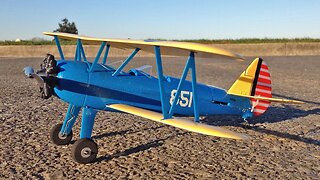 2:24
2:24
GBLynden's RC
8 years agoE-flite UMX PT-17 Stearman BNF WWII Warbird Biplane with AS3X Technology
69 -
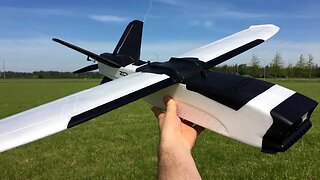 6:44
6:44
GBLynden's RC
4 years agoGo For A Ride On My ZOHD Talon GT Rebel RC Plane With Runcam 2 Onboard Footage
38 -
 2:14
2:14
GBLynden's RC
7 years agoFlight Video Only - E-flite UMX A-10 Warthog EDF Jet BNF Basic
128